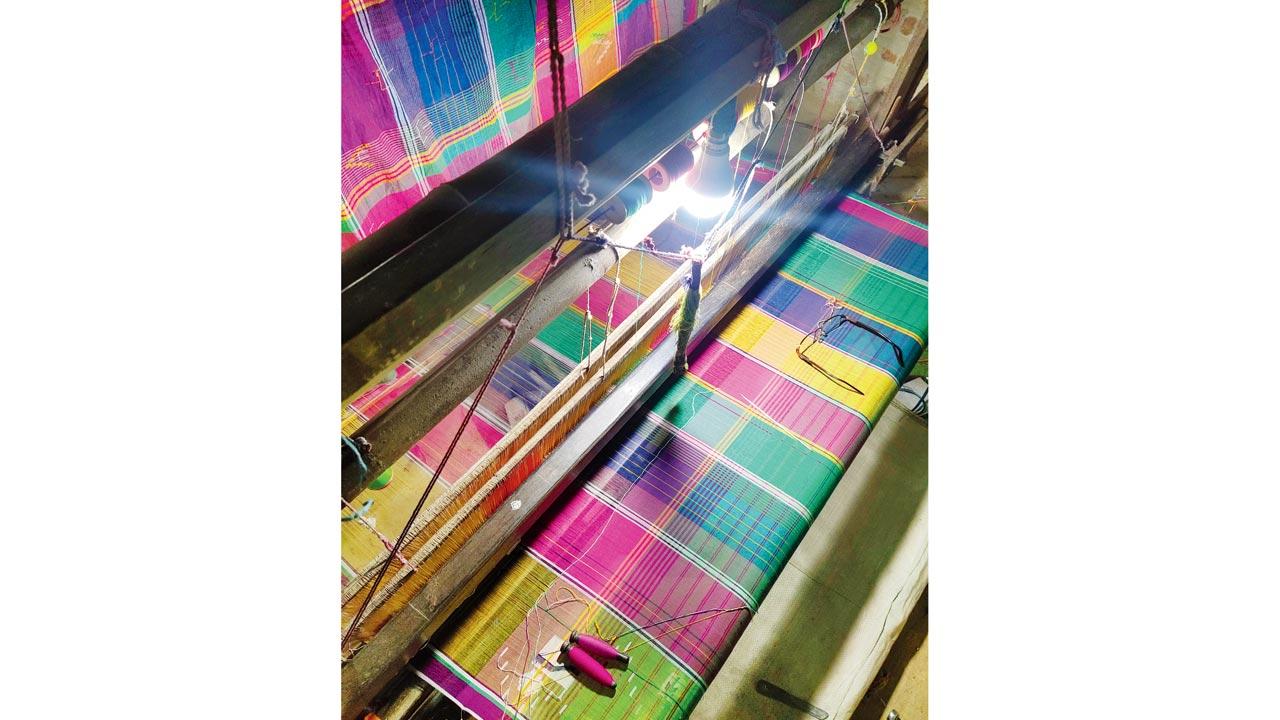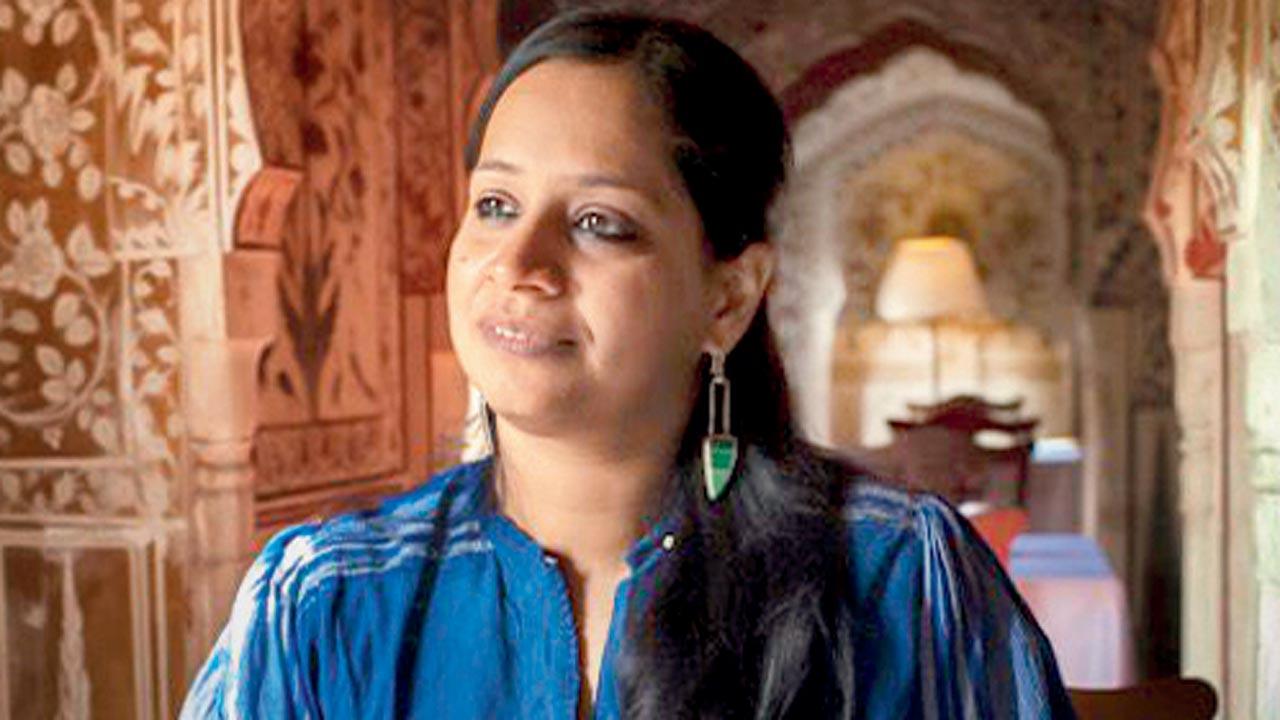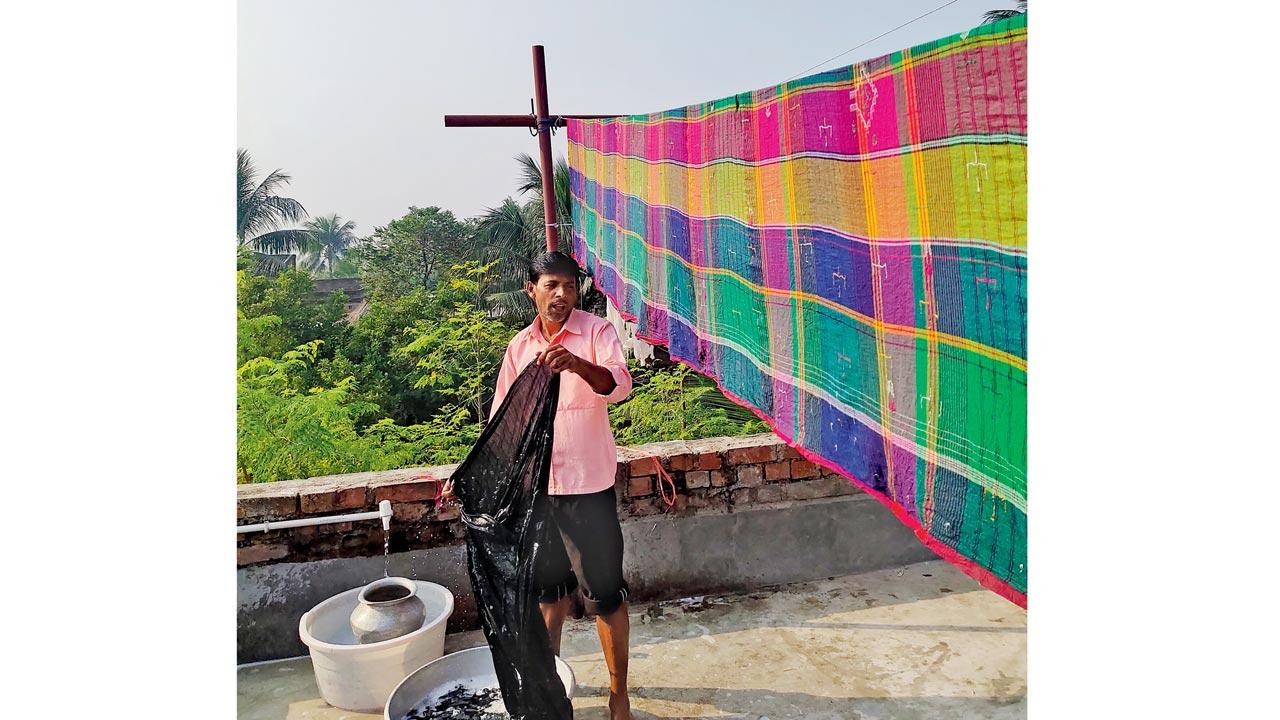Black History Month was perfect time to connect with Chinar Farooqui who works extensively with a centuries-old weave of vibrant horizontal and vertical lines that links India to Africa

Patched taanbaan dress and scarves featuring Madras plaid and Jamdani from Chinar Farooqui’s label, Injiri
I studied art from MS University, Baroda. The checked Madras pattern is at the heart of abstract art. It is visually exciting to create different tones, patterns and textures in a single garment... everything is rhythmic, concrete yet fleeting,” says Chinar Farooqui of textile-first brand, Injiri.
 Madras checks used as head wraps by African women. Pic Courtesy/Rotary News
Madras checks used as head wraps by African women. Pic Courtesy/Rotary News
Unlike brands that focus on surface embellishments, Farooqui says that she invests money and energy in handlooms. “Our Madras checks come with the value of extra weft [Jamdani technique] for our customers.” Her forthcoming spring/summer 2025 collection heroes the Madras checks once more, “although we incorporate checks every season”.
 Chinar Farooqui’s textiles on a floor loom Chinar Farooqui’s textiles on a floor loom at the Jamdani weaving cluster of Ghoranash in West Bengal. Pics Courtesy/Injirithe Jamdani weaving cluster of Ghoranash in West Bengal. Pics Courtesy/Injiri
Chinar Farooqui’s textiles on a floor loom Chinar Farooqui’s textiles on a floor loom at the Jamdani weaving cluster of Ghoranash in West Bengal. Pics Courtesy/Injirithe Jamdani weaving cluster of Ghoranash in West Bengal. Pics Courtesy/Injiri
Clothing labels need a memorable, resonant name. Origins and connections are important too, even if to be a maker is largely a matter of self-invention. It was only natural then for Farooqui to find her brand name in Injiri, a term used by Nigeria’s Kalabari tribe, which means “Real India”. “It is the core technique used by Injiri, the brand. These checkered textiles of Madras have been our source of inspiration for last 14 years and we revisit this age-old design language in different colours,” she explains.
 Chinar Farooqui
Chinar Farooqui
The fabric was named after Madraspatnam (Madras, now Chennai), the coastal city where loomers first started making the textile in the 12th century. Mass production and export of Madras fabric began with the arrival of the European colonists. In the early 1600s, Dutch traders arrived in India to trade calico cloth.
 US actress Ayo Edebiri poses with the awards for Outstanding Performance by a Female Actor in a Comedy Series and Outstanding Performance by an Ensemble in a Comedy Series for Hulu’s The Bear during the 30th Annual Screen Actors Guild awards at the Shrine Auditorium in Los Angeles on February 24. She’s wearing a monochrome Madras checks ensemble by Luar. Pic/Getty Images
US actress Ayo Edebiri poses with the awards for Outstanding Performance by a Female Actor in a Comedy Series and Outstanding Performance by an Ensemble in a Comedy Series for Hulu’s The Bear during the 30th Annual Screen Actors Guild awards at the Shrine Auditorium in Los Angeles on February 24. She’s wearing a monochrome Madras checks ensemble by Luar. Pic/Getty Images
In the 17th century, the British East India Company (EIC) occupied Madras, officially establishing it as a trading port and declaring control over Indian-made textiles. To establish a flourishing labour supply chain, the EIC promised 30-years exemption duties for Indian weavers in Madras, leading to an enormous surge in weavers settling in Madras. Over the next three centuries, the British would ship Real Madras Handkerchief (RMHK) to French and Spanish settlements in Africa, the Caribbean and the Pacific. Madras plaid became embedded in indigenous cultural traditions in Africa, as it was given to women after childbirth or as a gift to the families of deceased loved ones.
“When it comes to textile crafts of India, we like to talk about things that are rare and expensive like muslin, Chikankari or Pashmina. Madras plaid is part of India’s everyday fabric and culture. From colonisers to the colonised, the affluent to the masses, the Madras check cloths have been embraced by all,” Farooqui says.
What’s “Bleeding Madras”?

Bleeding Madras was made popular by captain CP Krishnan Nair, the late founder of The Leela Group. In the late ’50s, Nair introduced American textile exporter William Jacobson to a fabric that was woven in Chennai for South Africa. The USP? Because it was made using natural dyes, with every wash, the fabric would bleed colour and change texture, leading to the concept of “Bleeding Madras”. Excited, the exporter ordered 10,000 yards, which was bought by Brooks Brothers, America’s oldest high-end fashion company founded in 1818. The company fashioned it into jackets, shirts and shorts. But the entire collection had to be taken off the racks as Jacobson failed to mention “washing care” instructions to Brooks Brothers. Nair was sued for the non-fast colours, but the matter is said to have settled with Jacobson paying damages to the fashion company.
Farooqui adds, “Historically, this goes back to the origins of the Madras cloth, when weavers in India used natural vegetable dyes which bled naturally when damp. As a result, the bright colours would fade into new, unique designs of muted colours. Eventually, this became a selling point of the product, since no two pieces of fabric were alike after bleeding.”
 Subscribe today by clicking the link and stay updated with the latest news!" Click here!
Subscribe today by clicking the link and stay updated with the latest news!" Click here!










